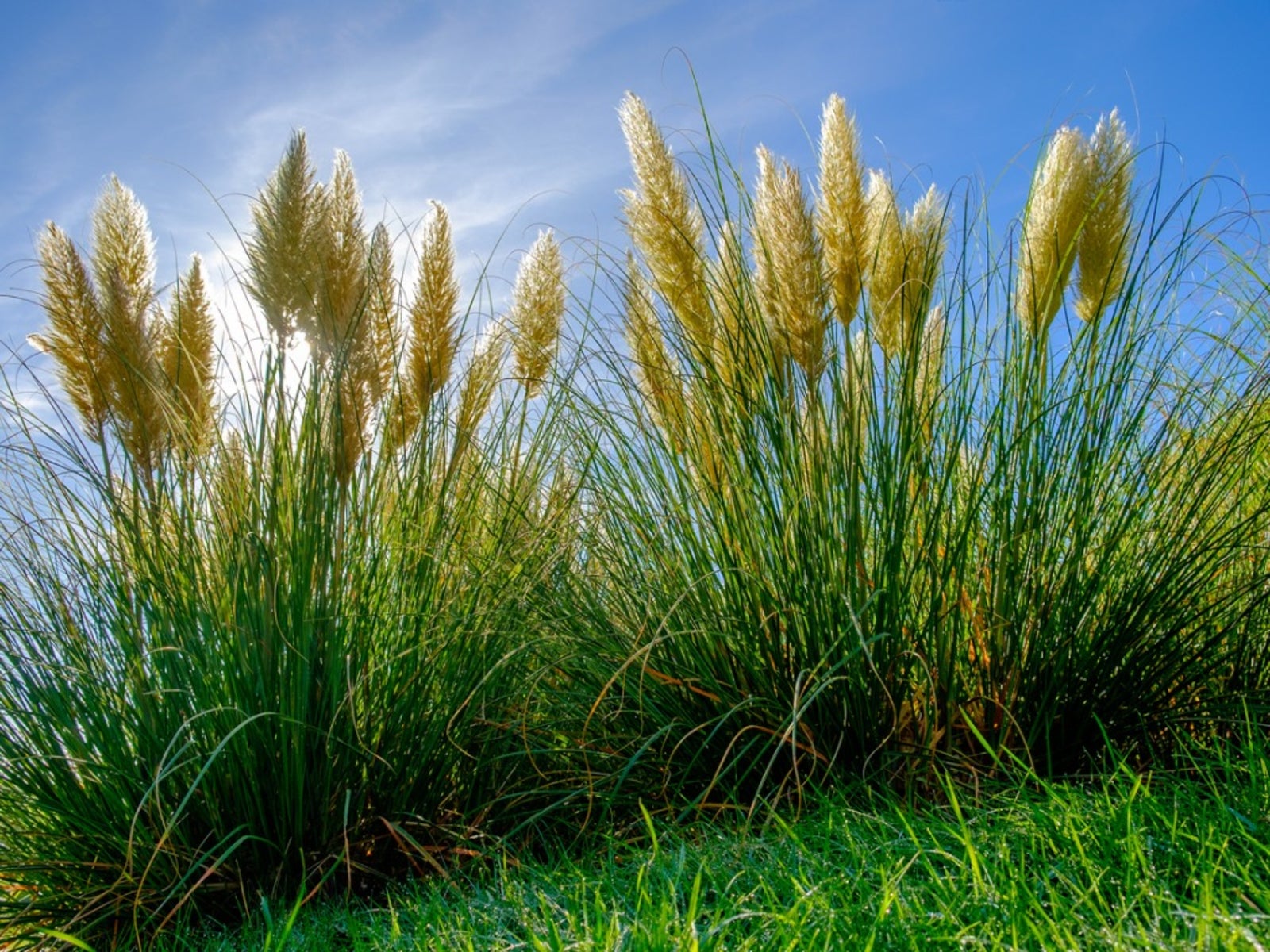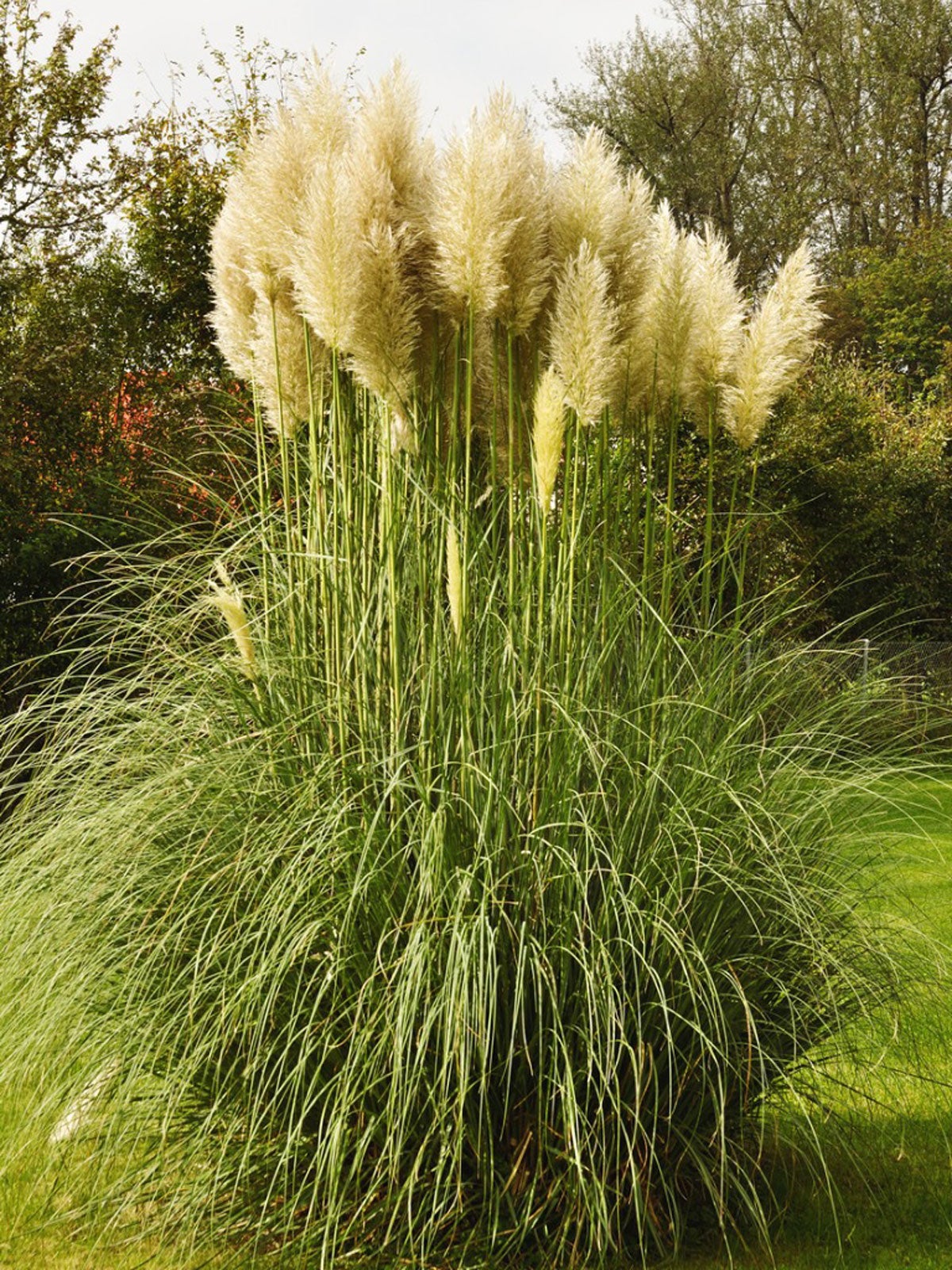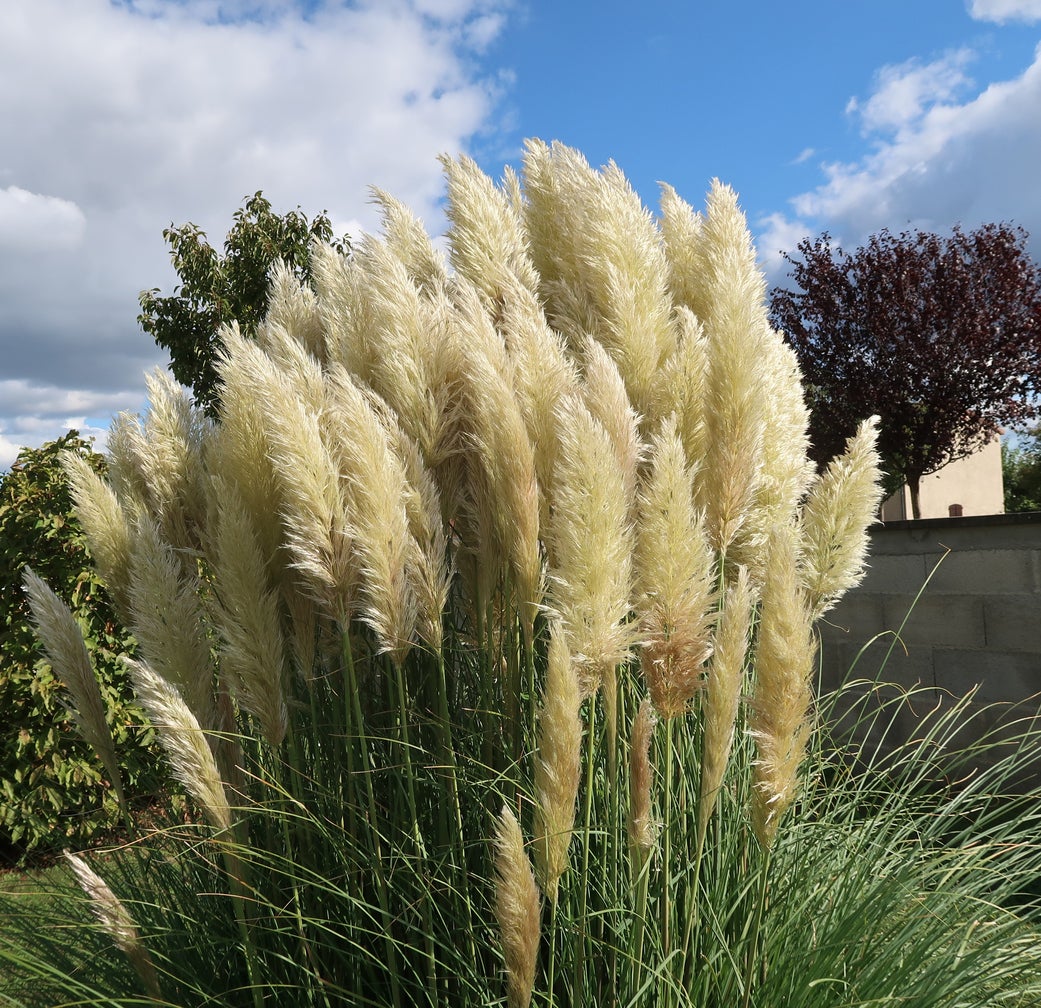Remove Pampas Grass: Tips For Pampas Grass Control And Removal

Pampas grass is a popular landscape plant that is commonly seen in the home garden. Many homeowners use it to mark property lines, hide ugly fences, or even as a windbreak. Pampas grass can grow quite large, over 6 foot (2 m.) with a 3 foot (1 m.) spread. Due to its size and numerous seeds, some people find pampas grass control a concern plus it is considered invasive in some areas. Thus, learning what kills pampas grass is important. Continue reading to learn how to remove pampas grass.
About Pampas Grass Plants
Pampas grass plants, native to Chile, Argentina, and Brazil, are perennial grasses that grow immensely large with saw-toothed leaves and large pink or white, showy plumes. Although many home gardeners plant pampas grass for its elegant appearance and hardy nature, it can become a problem in some areas. The grass is not picky about soil or sunlight but does best in some sun and loamy soil. Pampas grass seeds freely and can eventually crowd out native plants. It can also create a fire hazard in some areas and interfere with grazing land. This is especially true in California, Africa, and New Zealand where pampas grass is clearly recognized as an invasive plant. Each plant can contain up to 100,000 seeds per flower head, which are quickly dispersed in the wind. Cutting the grass down in the early spring encourages new growth the following season and can sometimes alleviate issues with seeds. Caution must be taken when working with pampas grass, however, as the leaves are exceedingly sharp and can cause razor-like cuts.
How Can I Get Rid of Pampas Grass?
Some people try to remove pampas grass manually only to find that it has a massive root system. Digging the grass up is not an entirely full proof way to rid your landscape of the grass. The best possible pampas grass control involves a combination of physical and chemical methods. Since it is a grass, it is best to first cut it as close to the ground as possible. Once the grass is cut down, you can apply an herbicide. Several treatments may be necessary for established plants. For more information on what kills pampas grass, check with your local Cooperative Extension Office for advice. Note: Chemical control should only be used as a last resort, as organic approaches are more environmentally friendly.
Gardening tips, videos, info and more delivered right to your inbox!
Sign up for the Gardening Know How newsletter today and receive a free copy of our e-book "How to Grow Delicious Tomatoes".
-
 Looking For Plants To Give You The Soft And Fuzzies? Try These 5 Fuzzy Leaf Plant Options
Looking For Plants To Give You The Soft And Fuzzies? Try These 5 Fuzzy Leaf Plant OptionsLovers of texture, drama, silver foliage and tactile plants will adore these special sensory garden additions. These fuzzy leaf plant options will leave you all aglow
By Susan Albert
-
 Get Ready For A Summer Of Hummers! Grow These Full Sun Hummingbird Plants and Flowers
Get Ready For A Summer Of Hummers! Grow These Full Sun Hummingbird Plants and FlowersIf you’re lucky enough to enjoy a sunny backyard, make sure you are maxing out on your pollinator opportunities and grow these full sun hummingbird plants and flowers
By Tonya Barnett
-
 Moving Pampas Grass: When Should I Transplant Pampas Grass Plants
Moving Pampas Grass: When Should I Transplant Pampas Grass PlantsPampas grass is a stunning addition to the landscape, forming mounds of around 10 feet (3 m.) in diameter. With its quick growth habit, it is easy to understand why many growers ask, “Should I transplant pampas grass?”. Click this article to learn more.
By Tonya Barnett
-
 Potted Pampas Grass Care: How To Grow Pampas Grass In Containers
Potted Pampas Grass Care: How To Grow Pampas Grass In ContainersThe huge, elegant pampas grass makes a statement in the garden, but can you grow pampas grass in pots? These grasses can get over ten feet (3 m.) tall, which means you need plenty of room. Click here for tips on how to grow pampas grass in containers.
By Bonnie L. Grant
-
 Pruning Pampas Grass: When And How To Prune Pampas Grass Plants
Pruning Pampas Grass: When And How To Prune Pampas Grass PlantsFew plants make as bold a statement in the landscape as pampas grass. These showy plants require little care except for the annual pruning, which isn't a job for the faint of heart. Find out about pruning pampas grass in this article.
By Jackie Carroll
-
 Pampas Grass Care - How To Grow Pampas Grass
Pampas Grass Care - How To Grow Pampas GrassWhile they?re extremely easy to grow, it?s important to know what you?re getting into before planting pampas grass around the home. Don?t be so quick to plant it simply because it looks good. Find out why here.
By Nikki Tilley